Abraliopsis sp. B
Lourdes Burgess and Richard E. YoungIntroduction
Abraliopsis sp. B is presently known only from Hawaiian and New Caledonian waters. It is a small, stocky species reaching 29 mm ML in females and at least 22 mm ML in males.
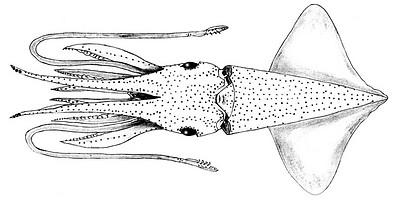
Figure. Ventral view of Abraliopsis sp. B, male. Drawing by L. Burgess.
Brief diagnosis:
An Abraliopsis (Abraliopsis) ...
- without dorsal flap on hectocotylus.
- with very broad head relative to ML (HWI, males - 45).
- with low numbers of hooks (11-14) on arms IV.
Characteristics
In addition to familial characters (listed on the Enoploteuthidae page) and generic characters (listed on the Abraliopsis page), Abraliopsis sp. B has:- Arms
- Hectocotylus (right arm IV) with long, low, rounded-trapezoidal membrane on ventral margin from opposite hook 4-6 to 3/4 of arm length, then continues as indistinct ridge. No dorsal membrane present.
- Arms IV relatively short. Arms IV length index - 59-84 (x̅ = 74.4, n = 14).
- Number and sizes of hooks not different between sexes; 13-21 hooks on arms I, 14-24 hooks on arms II, 14-22 hooks on arms III, 11-14 hooks on arms IV (x̅ = 12.5, n= 14); hooks on arms IV smallest.
- Arm tips with 14-26 suckers; generally arms III with fewest suckers, arms I with most. Largest arm suckers with three blunt teeth distally on inner rings, otherwise smooth.
 Click on an image to view larger version & data in a new window
Click on an image to view larger version & data in a new window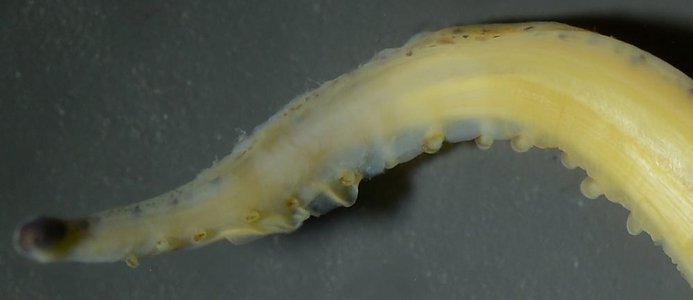
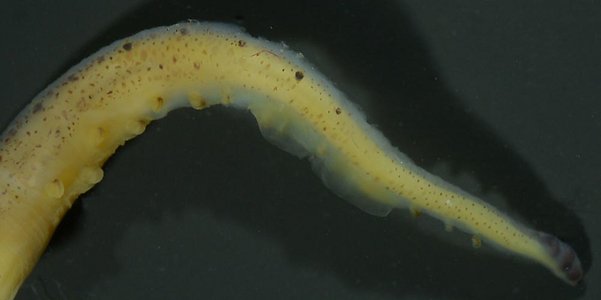
Figure. Hectoctylus of Abraliopsis sp. B, mature male, 19.5 mm ML. Top - Dorsal view showing no dorsal membrane. Bottom - Ventral view.
- Hectocotylus (right arm IV) with long, low, rounded-trapezoidal membrane on ventral margin from opposite hook 4-6 to 3/4 of arm length, then continues as indistinct ridge. No dorsal membrane present.
- Tentacles
- Club with 2 series of usually 3-4 hooks each; largest hooks of ventral series over 3 times length of counterparts of dorsal series and laterally compressed. Inner sucker rings of dactylus smooth.
- Club with large keel and carpal flap.
- Club with 2 series of usually 3-4 hooks each; largest hooks of ventral series over 3 times length of counterparts of dorsal series and laterally compressed. Inner sucker rings of dactylus smooth.
- Head
- Occipital folds: 4 folds or either side of head. Typically, fold 1 (ventral-most fold) barely recognizable; fold 2 with tongue-like olfactory papilla; fold 3 recognizable; fold 4 only apparent in large individuals. The posterior connection between folds 3 and 4 generally undetectable but barely detectable in squid in excellent condition (see below).
- Head very wide relative to mantle length. Head width index - Males: 40.9-50 (x̅ = 45.4, n=4); Females: 40-42.9(x̅ = 40.5, n = 4).
- Occipital folds: 4 folds or either side of head. Typically, fold 1 (ventral-most fold) barely recognizable; fold 2 with tongue-like olfactory papilla; fold 3 recognizable; fold 4 only apparent in large individuals. The posterior connection between folds 3 and 4 generally undetectable but barely detectable in squid in excellent condition (see below).
- Mantle
- Mantle short and broad (MWI 40).
- Fins
- Fins large. Fin length index - 60-80. Fin width index - 100-115 (x̅ = 106.4,
n = 8) .
- Fins large. Fin length index - 60-80. Fin width index - 100-115 (x̅ = 106.4,
- Photophores
- Ocular photophores, characteristic of most Abraliopsis spp., with 5 photophores with terminal photophores at either end slightly enlarged (<2 X adjacent photophores).
- Integumental photophores: Head and mantle with scattered photophores.
 Click on an image to view larger version & data in a new window
Click on an image to view larger version & data in a new window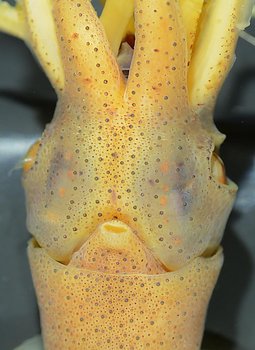
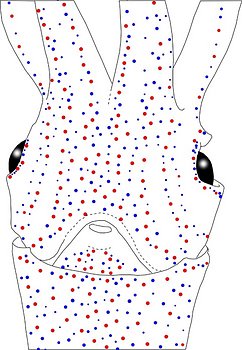
Figure. Abraliopsis sp. B showing photophore arrangement. Left - Ventral view. Right- Same view, same squid, drawing from photograph with colored dots representing photophores. Red dots - Complex photophores. Blue dots - Non-complex photophores. Images by R. Young.
A more detailed look at the photophore pattern can be seen here.
- Ocular photophores, characteristic of most Abraliopsis spp., with 5 photophores with terminal photophores at either end slightly enlarged (<2 X adjacent photophores).
- Viscera
- Female: One spermatangial receptacle under dorsal part of collar muscle on either side of nuchal cartilage (= Dorsal-Collar Pocket). No Stellate Pocket posterior to nuchal cartilage, between stellate ganglia, where gladius abuts visceral mass.
 Click on an image to view larger version & data in a new window
Click on an image to view larger version & data in a new windowsp.bsperm.250a.jpg)
Figure. Dorsal view of Abraliopsis sp. B with the mantle folded posteriorly to reveal the pigmented spermatangiia receptacles. The collar on the right side of the squid has been partially cut away to show the attached spermatangia.The white material anterior to the attachments sites seems to be a preservation artifact. Photograph by R. Young.
- Female: One spermatangial receptacle under dorsal part of collar muscle on either side of nuchal cartilage (= Dorsal-Collar Pocket). No Stellate Pocket posterior to nuchal cartilage, between stellate ganglia, where gladius abuts visceral mass.
- Measurements and counts:
TC 7, sta. 10
TC 7, sta. 10
TC 32, sta. 28
TC 32, sta. 18
TC 32, sta. 18
TC 32, sta. 18
TC 7, sta. 10
TC 32, sta. 8
NEC 2017, M1057-01
Sex
Male
Male
Male
Male
Female
Female
Female
Female
Female
Mantle length
20
20
22
22
21
23
25
25
24
Head width index
50
45
46
41
43
39
40
40
51
Fin Length index 60
75
73
68
74
77
80
76
71
Fin width index 110
115
100
100
110
100
104
112
104
Arm Length, I
50
50
41
46
48
48
48
36
II
55
55
46
50
52
52
56
40
III
55
60
46
50
52
52
52
44
IV
80/80
70/75
59/-
73/73
76/76
76/76
80/84
64/-
79/79
No. hooks, I
19
10
18
18
14
19
20
20
19/20
II
20
21
18
19
17 21
21
16
22/20
III
19
19
18
21
16 22
20
19
18/18
IV
12/12
13/13
11/-
13/13
12/13
13/14
12/12
12/-
12/12
Club length index
25
30
21
23
24
30
28
20
22/24
Club hooks
3/4; 4/3
3/4;4/3
3/3; 4/4
4/4; 3/3
3/5; 3/4
5/4; 4/4
3/4; 4/3
4/4; -
5/5; 5/4
Carpal suckers
5/5
4/4
4/4
4/4
4/4
5/5
4/4
4/-
-/-
Comments
Distribution
Abraliopsis sp. B is common in Hawaiian waters and is also known from north of New Caledonia at 16°59.7'S, 163°29.6'E.Title Illustrations

| Scientific Name | Abraliopsis sp. B |
|---|---|
| Location | Hawaiian waters |
| Specimen Condition | Dead Specimen |
| Sex | Male |
| Life Cycle Stage | Mature |
| View | Ventral |
| Size | 20 mm ML |
| Image Use |
 This media file is licensed under the Creative Commons Attribution License - Version 3.0. This media file is licensed under the Creative Commons Attribution License - Version 3.0.
|
| Copyright |
©

|
| Scientific Name |
Abraliopsis sp. B Abraliopsis |
|---|---|
| Location | Hawaiian waters |
| Specimen Condition | Live Specimen |
| View | Side |
| Image Use |
 This media file is licensed under the Creative Commons Attribution-NonCommercial License - Version 3.0. This media file is licensed under the Creative Commons Attribution-NonCommercial License - Version 3.0.
|
| Copyright |
© 2000

|
About This Page

University of Hawaii, Honolulu, HI, USA
Page copyright © 2013 and
 Page: Tree of Life
Abraliopsis sp. B.
Authored by
Lourdes Burgess and Richard E. Young.
The TEXT of this page is licensed under the
Creative Commons Attribution-NonCommercial License - Version 3.0. Note that images and other media
featured on this page are each governed by their own license, and they may or may not be available
for reuse. Click on an image or a media link to access the media data window, which provides the
relevant licensing information. For the general terms and conditions of ToL material reuse and
redistribution, please see the Tree of Life Copyright
Policies.
Page: Tree of Life
Abraliopsis sp. B.
Authored by
Lourdes Burgess and Richard E. Young.
The TEXT of this page is licensed under the
Creative Commons Attribution-NonCommercial License - Version 3.0. Note that images and other media
featured on this page are each governed by their own license, and they may or may not be available
for reuse. Click on an image or a media link to access the media data window, which provides the
relevant licensing information. For the general terms and conditions of ToL material reuse and
redistribution, please see the Tree of Life Copyright
Policies.
- First online 03 November 2013
- Content changed 03 November 2013
Citing this page:
Burgess, Lourdes and Richard E. Young. 2013. Abraliopsis sp. B. Version 03 November 2013 (under construction). http://tolweb.org/Abraliopsis_sp._B/149526/2013.11.03 in The Tree of Life Web Project, http://tolweb.org/




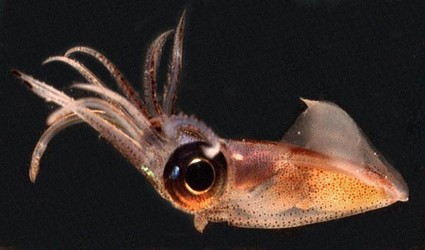

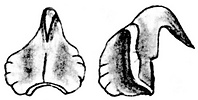

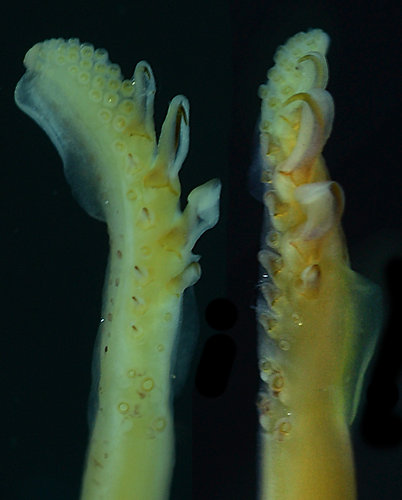

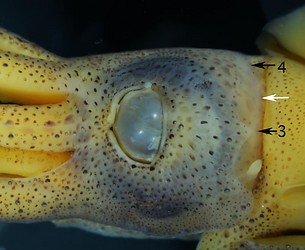




 Go to quick links
Go to quick search
Go to navigation for this section of the ToL site
Go to detailed links for the ToL site
Go to quick links
Go to quick search
Go to navigation for this section of the ToL site
Go to detailed links for the ToL site